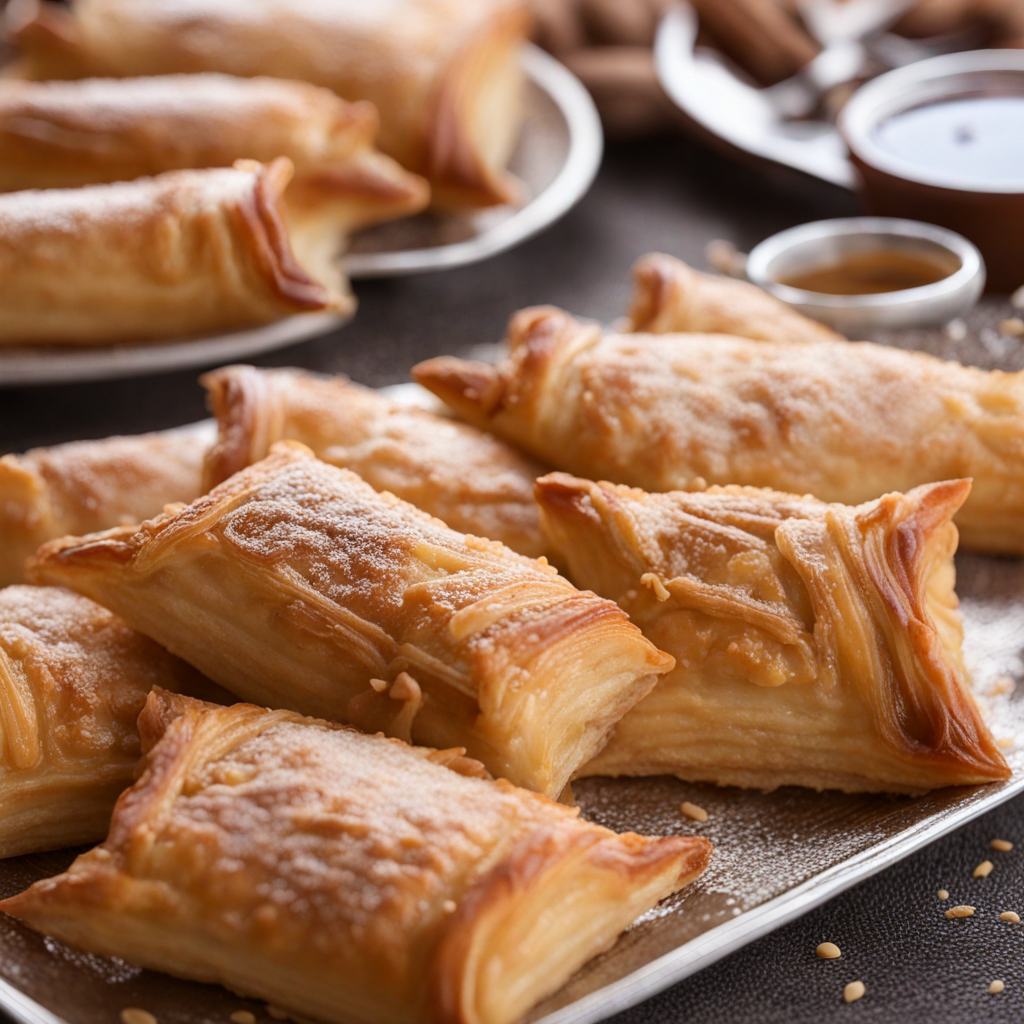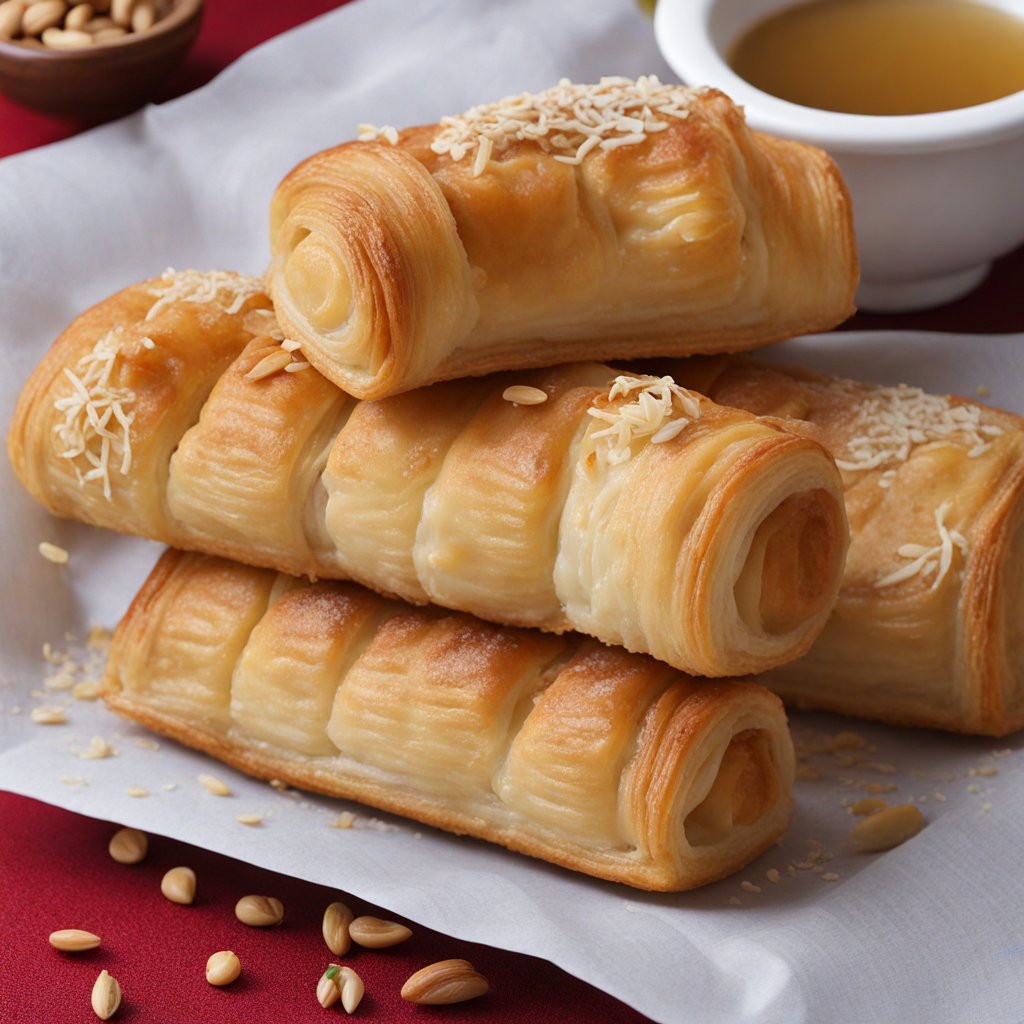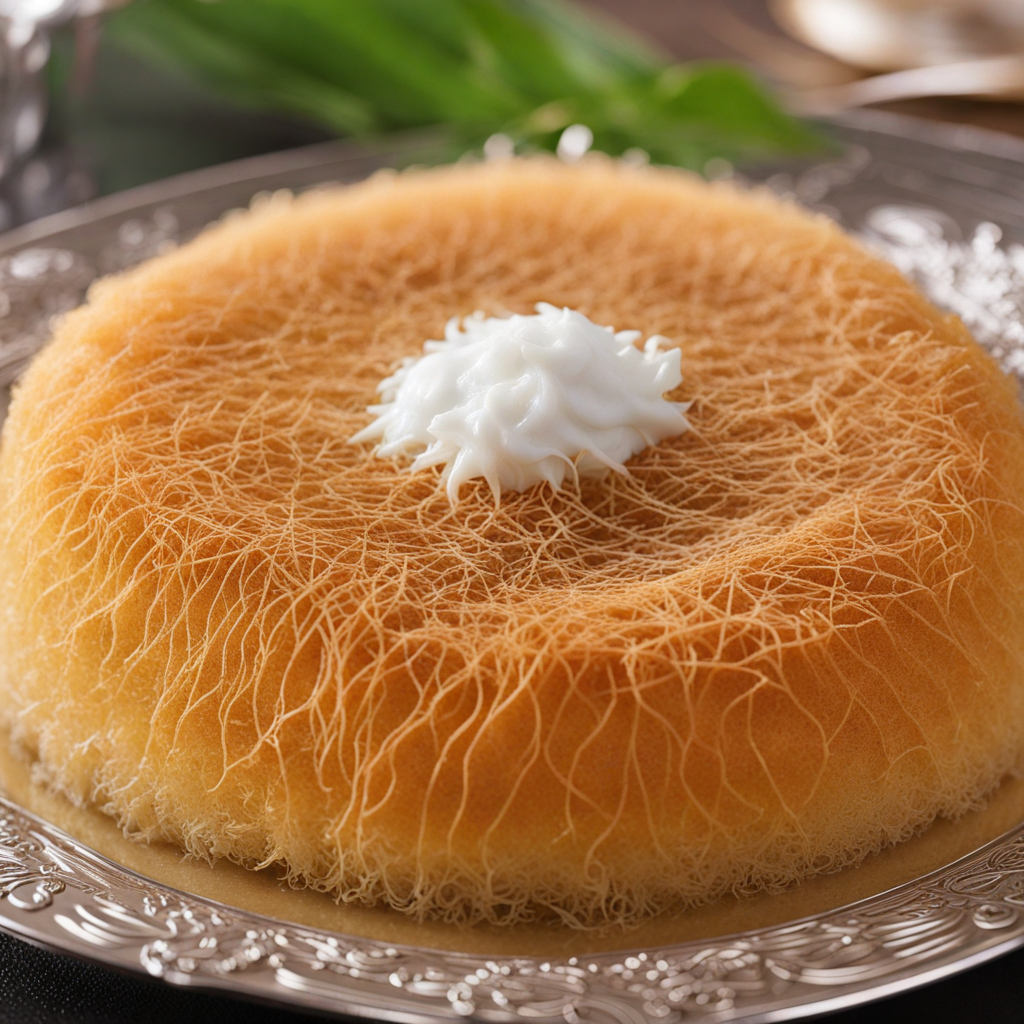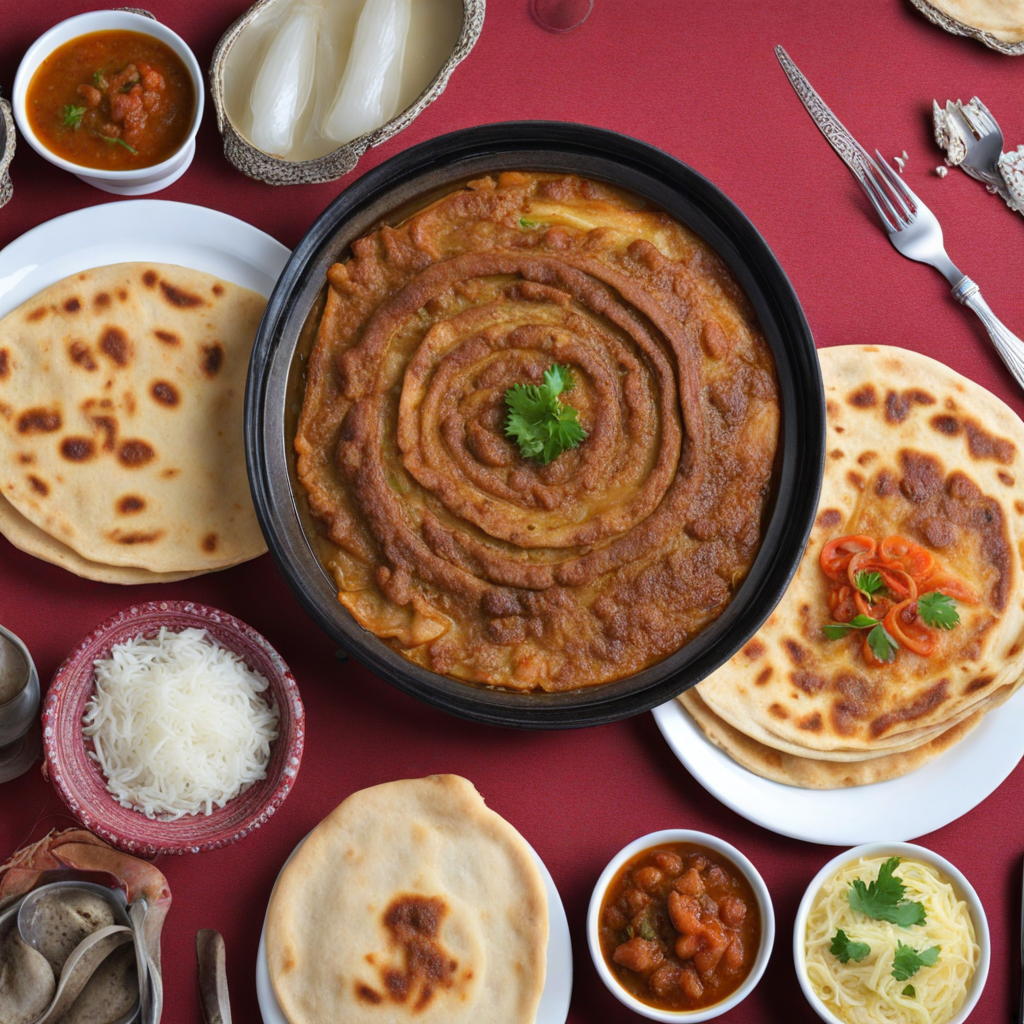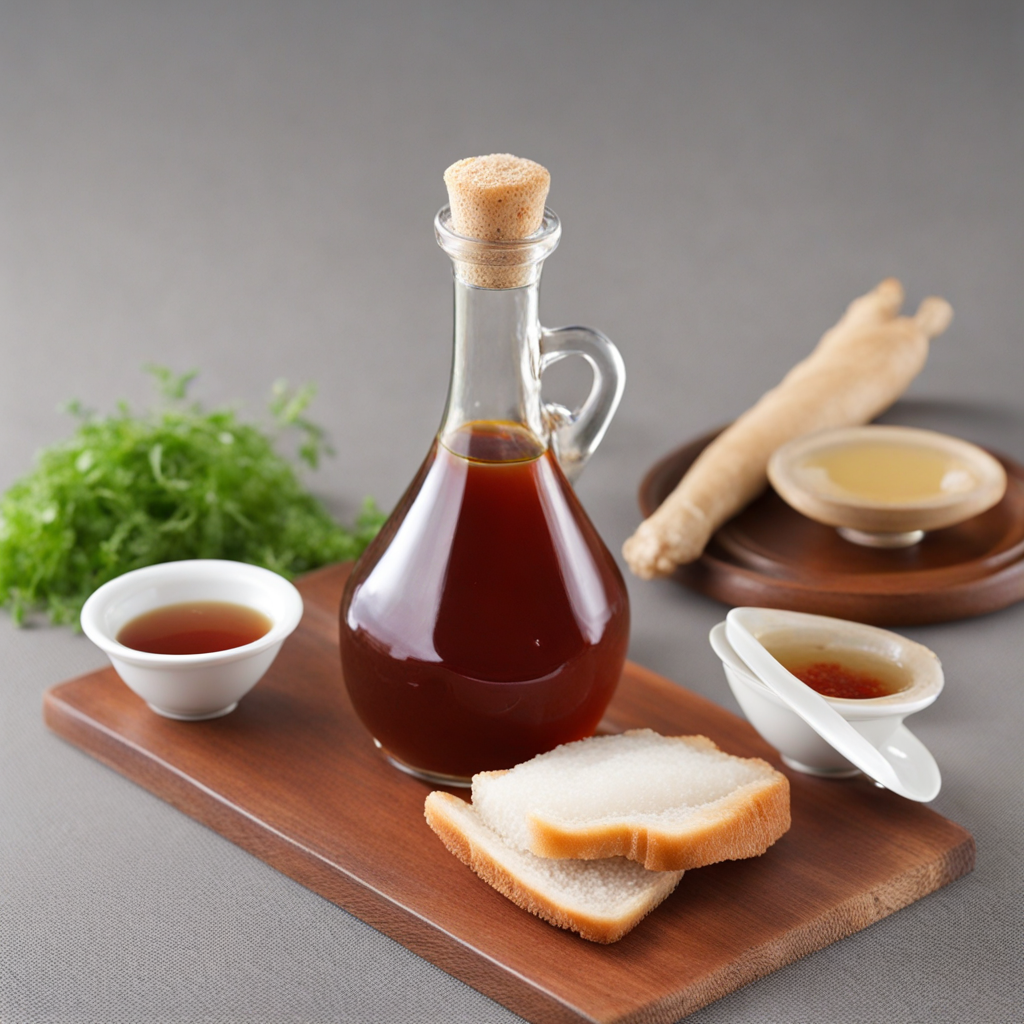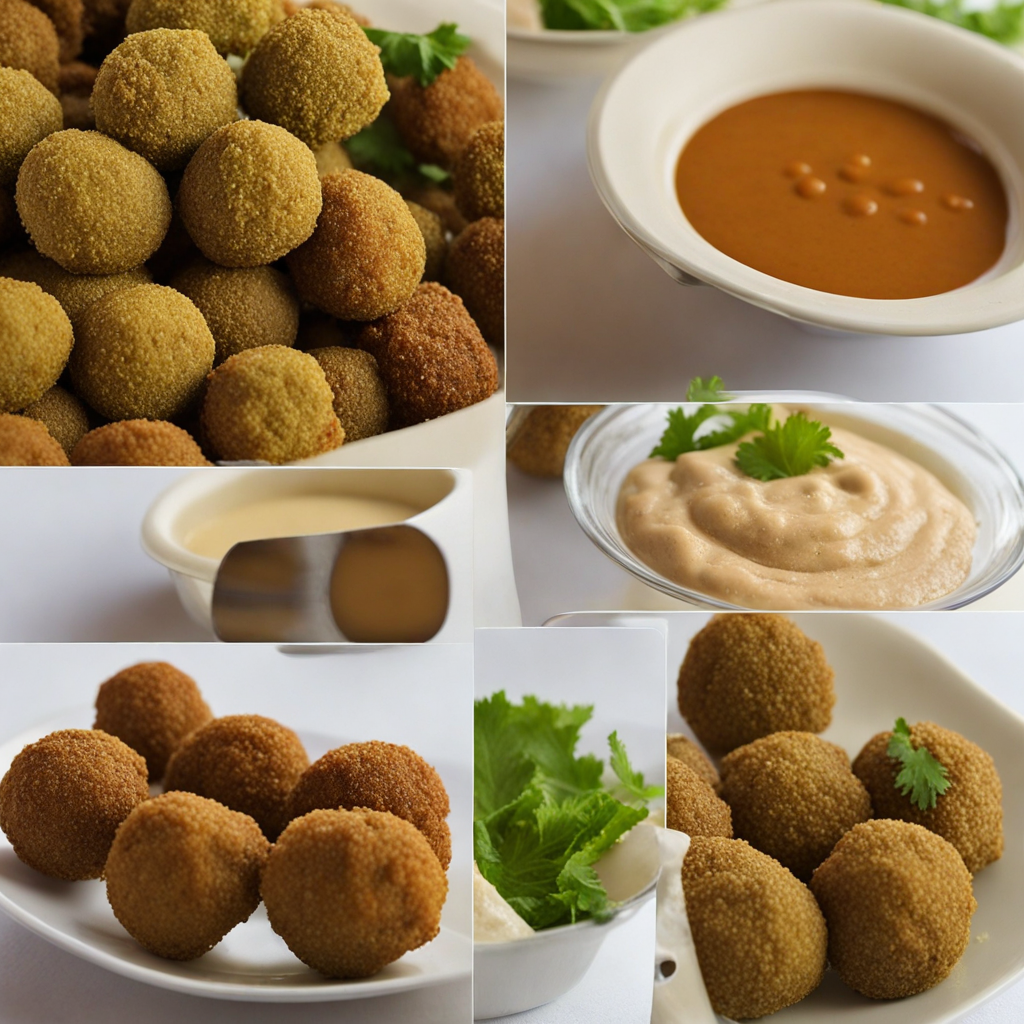Warbat
Warbat is a delightful pastry that hails from the rich culinary traditions of Bahrain, known for its delicate, flaky texture and sweet filling. This traditional dessert is made using layers of thin, buttery dough that is similar to phyllo, which is carefully folded and filled with a luscious mixture of nuts, often almonds or pistachios, combined with fragrant spices and a hint of sugar. The layers are meticulously crafted to create a light and airy pastry that melts in your mouth, offering a sensory experience that is both satisfying and indulgent. Once baked to a golden perfection, Warbat is frequently drenched in a sweet syrup, typically made from sugar, lemon juice, and rose water, which adds a layer of floral notes and enhances the overall sweetness of the pastry. This syrup seeps into the layers, enriching the flavor and giving the Warbat its signature moistness. The combination of the crunchy nut filling, the crispy pastry, and the syrup creates a harmonious balance between textures and flavors, making it a favorite among dessert lovers. Warbat is often enjoyed with a cup of Arabic coffee or tea, making it a perfect accompaniment for gatherings and celebrations. Its presentation is as beautiful as its taste, often dusted with powdered sugar and garnished with crushed nuts or a sprinkle of cinnamon. For those looking to expand their culinary horizons, Warbat offers a unique taste experience that showcases the unique flavors of Bahrain, inviting everyone to indulge in its sweet, nutty, and aromatic profile.
How It Became This Dish
The Culinary Heritage of ورابات (Wurabat) in Bahrain: A Journey Through Time Bahrain, a small island nation in the Arabian Gulf, is renowned for its rich cultural heritage and vibrant food scene, which reflects its historical interactions with various civilizations. Among the many culinary treasures of Bahrain, ورابات (Wurabat) holds a special place, embodying the island’s unique blend of tradition, flavor, and communal spirit. This delicious dish, often overlooked in the annals of Bahraini cuisine, showcases the country’s historical ties to the broader Gulf region and the evolution of its food culture. Origins of Wurabat Wurabat, also known by various regional names, is believed to have originated in the Arabian Peninsula, with its roots linked to the Bedouin lifestyle. The dish is traditionally made with thin layers of dough, filled with a mixture of spiced meat, typically lamb or chicken, and rolled into a spiral or cylindrical shape before being baked or fried. The name "Wurabat" itself is derived from the Arabic word "ورب" (wrab), which means “to wrap” or “to roll,” perfectly describing the method of preparation. Historically, Wurabat was a staple of Bedouin cuisine, where nomadic tribes would prepare it as a portable meal, ideal for their migratory lifestyle. The use of readily available ingredients such as flour, meat, and spices made it an easy dish to prepare and transport. As trade routes flourished in the region, Wurabat gained prominence as it was introduced to various cultures, absorbing influences from Persian, Indian, and even Mediterranean cuisines. Cultural Significance Wurabat is more than just a dish; it is a cultural artifact that embodies the communal and familial ties of Bahraini society. Traditionally served during gatherings, weddings, and festive occasions, it symbolizes hospitality and generosity. Its preparation is often a communal affair, where families come together to roll out the dough, prepare the filling, and cook the dish, strengthening bonds through shared labor and culinary creativity. In Bahrain, food is a central part of social life, and Wurabat is no exception. It is often served alongside other traditional dishes, creating a feast that showcases the abundance and diversity of Bahraini cuisine. The dish is usually accompanied by side condiments such as tzatziki or spicy chutneys, enhancing its flavor profile while allowing for personal customization. Moreover, Wurabat has become a symbol of Bahrain's cultural identity amidst the rapid changes brought on by modernization and globalization. As Bahraini expatriates travel around the world, they carry with them the recipes and traditions of their homeland, ensuring that Wurabat remains a cherished component of their cultural heritage. Evolution Over Time As Bahrain has transformed over the centuries, so too has the preparation and presentation of Wurabat. During the early 20th century, the dish was primarily associated with Bedouin culture and was made using simple, rustic methods. However, with the advent of urbanization and the introduction of modern cooking techniques, Wurabat began to evolve. In the mid-20th century, as Bahrain experienced economic growth due to oil discoveries, the culinary landscape shifted dramatically. Traditional dishes, including Wurabat, began to adapt to the tastes and preferences of a more urban population. Restaurants and cafes started to offer Wurabat as part of their menus, leading to a broader appreciation of the dish beyond the confines of home kitchens. This shift marked the beginning of Wurabat's journey from a humble, home-cooked meal to a popular dish served in social gatherings and restaurants. Today, Wurabat is often prepared in various styles, reflecting the diversity of Bahraini society. While the classic version remains beloved, chefs and home cooks alike experiment with fillings, incorporating ingredients like cheese, vegetables, and even seafood, appealing to a wider range of tastes. The rise of food blogging and social media has further propelled Wurabat into the spotlight, allowing it to gain recognition both locally and internationally. Contemporary Relevance In contemporary Bahrain, Wurabat continues to thrive as a beloved dish that transcends generations. Food festivals and cultural events frequently feature Wurabat, showcasing its role in the national identity. Furthermore, the dish has also found its way into the hearts of Bahrain's younger generations, who take pride in both its history and its adaptability. As global culinary trends increasingly emphasize authenticity and heritage, Wurabat stands as a testament to the importance of preserving traditional recipes while embracing innovation. Bahraini chefs are now exploring fusion cuisines, integrating Wurabat into international culinary contexts. For example, Wurabat-inspired appetizers may be served at high-end restaurants, appealing to both local and expatriate diners seeking a taste of home. Moreover, in an era where sustainability is becoming a pressing concern, the community-oriented aspect of Wurabat’s preparation resonates with modern values of sharing and cooperation. Many families are returning to the roots of communal cooking, celebrating their history through shared meals that honor the past while nurturing the present. Conclusion Wurabat is a reflection of Bahrain’s rich culinary history, encapsulating the cultural significance of food as a medium of expression and connection. From its origins among nomadic tribes to its contemporary status as a symbol of Bahrain’s diverse culinary landscape, Wurabat embodies the spirit of community, tradition, and adaptation. As Bahrain continues to evolve, Wurabat will undoubtedly remain a cherished part of its culinary heritage, bridging the past and the future, uniting generations, and celebrating the flavors of home. Through the lens of Wurabat, one can appreciate not only the artistry of Bahraini cooking but also the tales of resilience and cultural exchange that define this small yet historically rich island nation. As this delicious dish continues to be prepared and enjoyed, it serves as a delicious reminder of Bahrain’s enduring culinary legacy.
You may like
Discover local flavors from Bahrain


